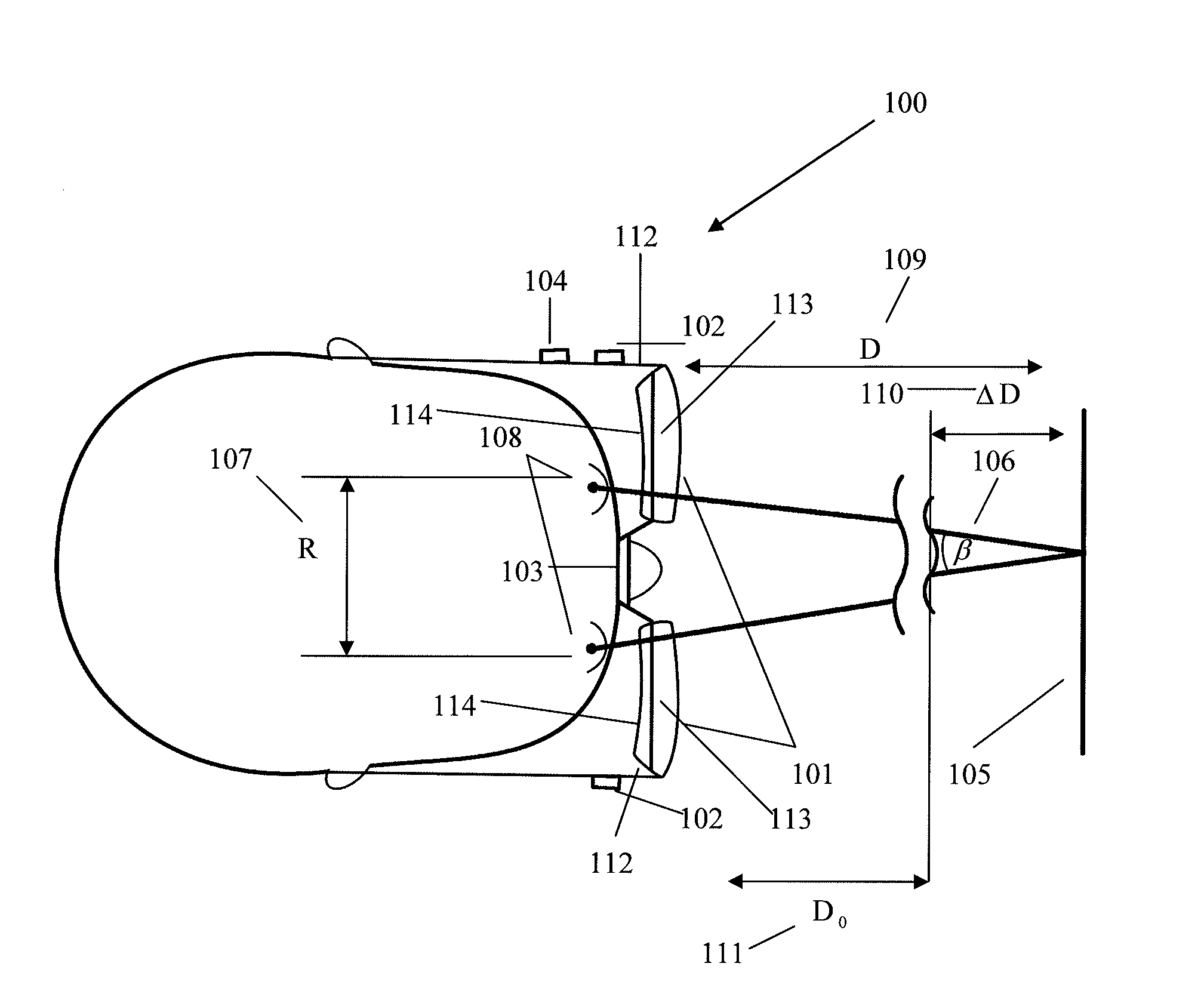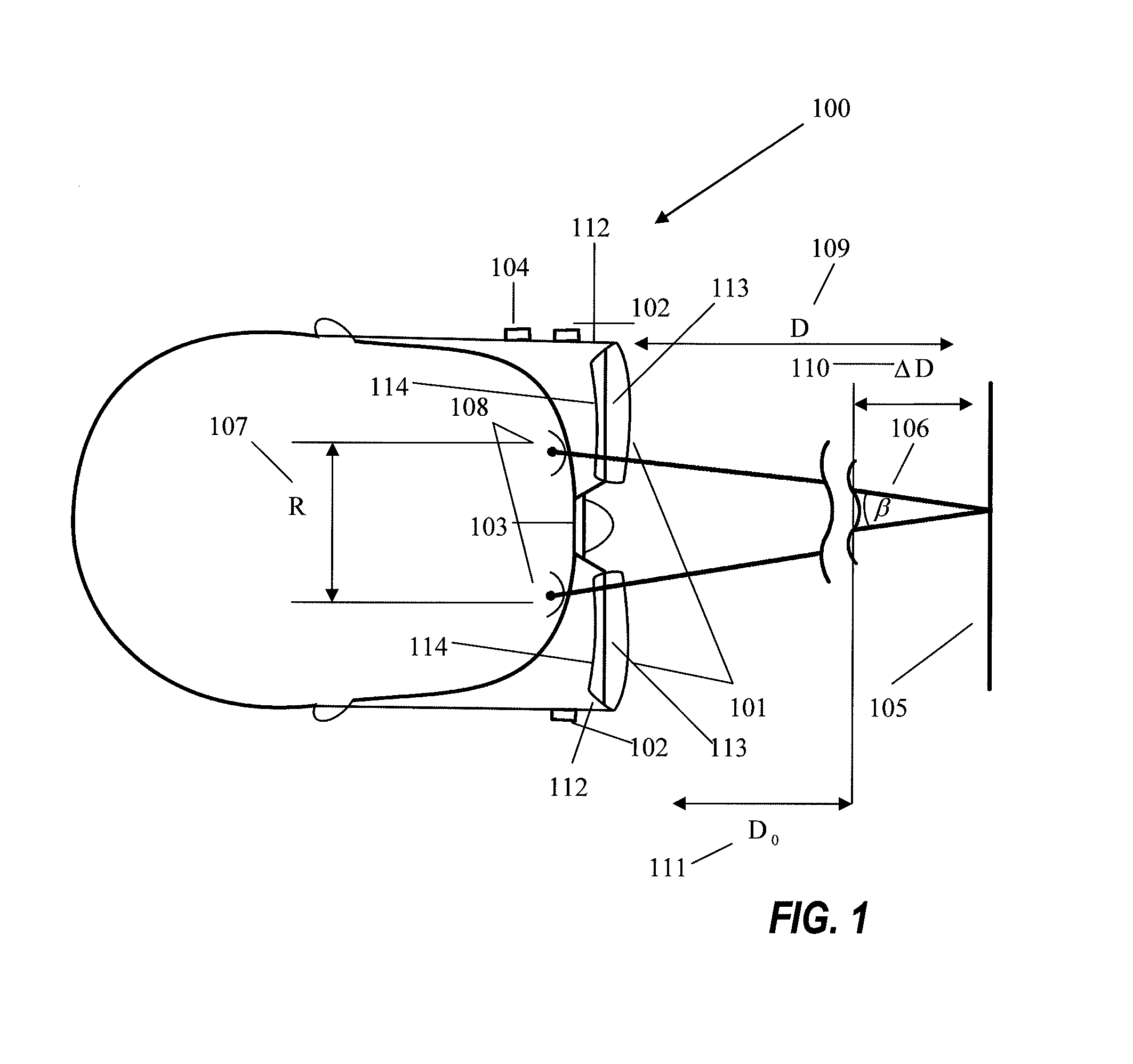Autofocusing eyewear, especially for presbyopia correction
a technology for presbyopia and eyewear, applied in the field of presbyopia correction, can solve the problems of loss of orientation, cumbersome approach, and person's inability to accommodate their eyes by
- Summary
- Abstract
- Description
- Claims
- Application Information
AI Technical Summary
Benefits of technology
Problems solved by technology
Method used
Image
Examples
Embodiment Construction
[0032]FIG. 1 is a schematic diagram that illustrates the functionality of an embodiment of autofocusing presbyopia correcting eyewear, indicated generally by reference numeral 100. In eyewear 100 there are two eyeglass optics 101, each comprising a variable power lens 113 and a gaze tracker waveguide 114. The gaze tracker waveguide 114 has a volume reflection hologram for redirecting a gaze tracker illumination beam from waveguide to the eye as well as redirecting cornea reflex back to the waveguide. Also in FIG. 1 is eye parallax tracker electronics 102. The eye parallax tracker has a cornea illumination system, a cornea reflex imager and a controller 104. The autofocusing eyewear described herein has a variable focus lens driver 103 and a system controller 104. An object plane 105 is at distance 109 (D). When the user concentrates his or her gaze on an object in object plane 105, the lines of gaze for the left and right eyes define parallax angle β106 and distance R 107 between co...
PUM
 Login to View More
Login to View More Abstract
Description
Claims
Application Information
 Login to View More
Login to View More - R&D
- Intellectual Property
- Life Sciences
- Materials
- Tech Scout
- Unparalleled Data Quality
- Higher Quality Content
- 60% Fewer Hallucinations
Browse by: Latest US Patents, China's latest patents, Technical Efficacy Thesaurus, Application Domain, Technology Topic, Popular Technical Reports.
© 2025 PatSnap. All rights reserved.Legal|Privacy policy|Modern Slavery Act Transparency Statement|Sitemap|About US| Contact US: help@patsnap.com



